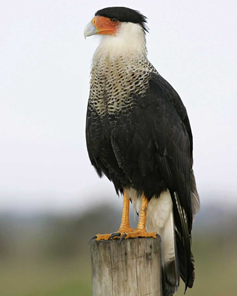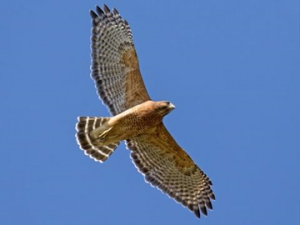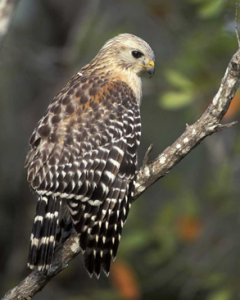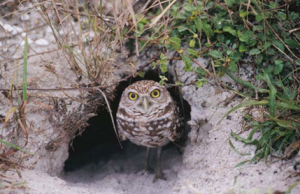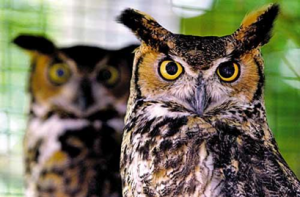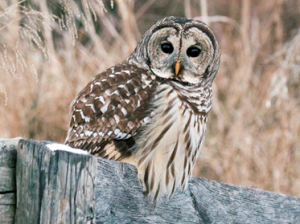During these uncertain times everyone is trying to find ways to pass the time, whether this means being unproductive or productive. One PRODUCTIVE and educational way we can pass the time is by learning about the local wildlife. Not only does being outside help you stay at peace by being with nature, you can learn about the local wildlife that you encounter every day. Many people have a hard time identifying bird species, but now with spare time you have a chance to learn!
Bird watching is an activity that is ageless – anyone can learn and appreciate the wonderous bird species! All you need are a pair of binoculars. Every week during this quarantine we will be learning about different types of bird species that can be seen your backyard, local parks, pastures, and throughout your community. This week, we will be learning about “Birds of Prey”. Here are a few types of birds you might be seeing every day, in central Florida but unsure on what they are:
**TIP: Try going outside in the morning when the wildlife is waking up and active and listen to the bird calls.
Crested Caracara
Habitat:
- Wet prairies with cabbage palms, wooded areas with saw palmetto, cypress, and scrub oaks, pastures
- South central Florida, Texas, Arkansas, Mexico, Cuba, and Panama
Diet:
- Dead animal carcasses, amphibians, reptiles, mammals, eggs, and other birds
Nesting:
- Eggs have been found from September to April
- Peak breeding season from January to March
- Nests are constructed with sticks, dry weed stalks, and long and narrow segments of vine
- Clutch Size: 2 eggs (pale brown, blotched with darker brown)
Click here for more information
Red-Tailed Hawk
Habitat:
- Mixed forest and farmlands
- **Inhabits the greatest diversity of habitats of any North American hawk**
Diet:
- Mice, rats, squirrels, and rabbits (small animals)
Nesting:
- Begins breeding in February, and nesting extends through June (Florida)
- Nests throughout much of Canada, the United States, and Mexico
- Clutch size: 2-3 eggs (whitish, blotched with brown)
Click here for more information
Red Shouldered Hawk
Habitat:
- Deciduous woodlands, often near rivers and swamps.
- During migration, they often move high overhead along ridges or along the coast
Diet:
- Small mammals, amphibians, and reptiles (while in perches or flying)
Nesting:
- Mating season between April-July, peaking April-June
- Breeding pair build a nest of sticks in a fork in a large tree
- Clutch Size: 2-5 eggs (Pale bluish-white, blotched with brown and lavender)
Click here for more information
Burrowing Owl
**Threatened on the Endangered Species List**:
Habitat
- Open prairies
- Little understory vegetation (gold courses, airports, pastures, vacant fields, and agriculture fields)
Diet:
- Insects and small animals
Nesting:
- Burrow in the ground (around bare soil or short grass)
- Florida birds usually dig their own
- Clutch size: 4-6 (Eggs white, becoming nest-stained)
Note: The burrowing owl faces many threats to its population. The main threat is the continued loss of habitat. Threats to habitat include construction activities development and harassment by humans and domesticated animals. Heavy floods can destroy burrows in the ground, which can cause the destruction of eggs and young. Other threats include increased predation by ground and aerial predators in the burrowing owl’s habitat, and vehicle strikes. The Florida burrowing owl is classified as State Threatened by the Florida Fish and Wildlife Conservation Commission. This means that taking, possessing, or selling burrowing owls, their nests (i.e., burrows), or eggs is prohibited without a permit (68A-27 F.A.C.). Burrowing owls, eggs, and young are also protected by the federal Migratory Bird Treaty Act.
**Fun Fact**: Cowboys call this bird the “howdy bird”- nod in greeting
Click here for more information
Great Horned Owl
Habitat:
- Florida’s largest owl
- Occupy open oak forests, open pinelands, river bottoms in northwestern Florida
Diet:
- Hunts mostly at night
- Rats, mice, squirrels, and rabbits are frequently hunted
- Can take mammals up to the size of skunks or domestic cats
Nesting:
- Usually nest in a heron or hawk nest
- Typically abandoned nests, but sometimes evict the “rightful owner
- Breeds in the winter
- Clutch size: 2-3 eggs (dull whitish)
Click here for more information
Barn Owl
Habitat:
- Most seen in Central and South Florida
- Hardwood and tropical hammocks, urban areas with abundant palms and large hardwoods, and manmade structures such as silos, barns, and deserted buildings
Diet:
- Rodents in open areas (prairies, pastures, fields, and sparsely wooded areas)
Nesting:
- Breed from March through July (Florida)
- Build no actual nest
- In secluded places like caves, barns, tree cavities, and large birdhouses
- Clutch size: 2-8 eggs (Whitish, sometimes becoming nest-stained)
- Least common species of owl that breeds in Florida.
- Chest and belly is typically white in males and light brown in females, but it can vary somewhat. Both the chest and belly have small, dark spots in the females; males have little spotting
Click here for more information
Barred Owl
Habitat:
- Recognizable “Who cooks for you?” call
- Live in large, mature forests made up of both deciduous trees and evergreens, often near water
- Roost quietly in forest trees during the day
Diet:
- Hunt at night
- Small rodents (mice, squirrels, rabbits, shrews)
Nesting:
- Large natural hollow in tree, broken-off snag, or on old nest of hawk, crow, or squirrel
- Clutch size: 2-3 eggs (white)
**Fun Fact**: The Great Horned Owl is the most serious predatory threat to the Barred Owl. Although the two species often live in the same areas, a Barred Owl will move to another part of its territory when a Great Horned Owl is nearby.
Click here for more information
If you see any fun birds in your yard, be sure to take the time and enjoy their company. Listen to their calls and marvel at their colors and patterns. If you see any of these species in your yard or local park, let us know!
 0
0
